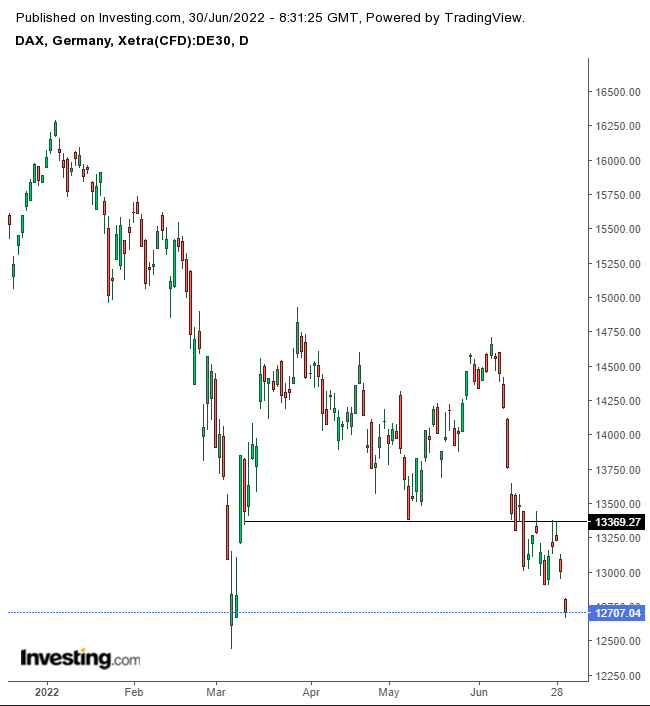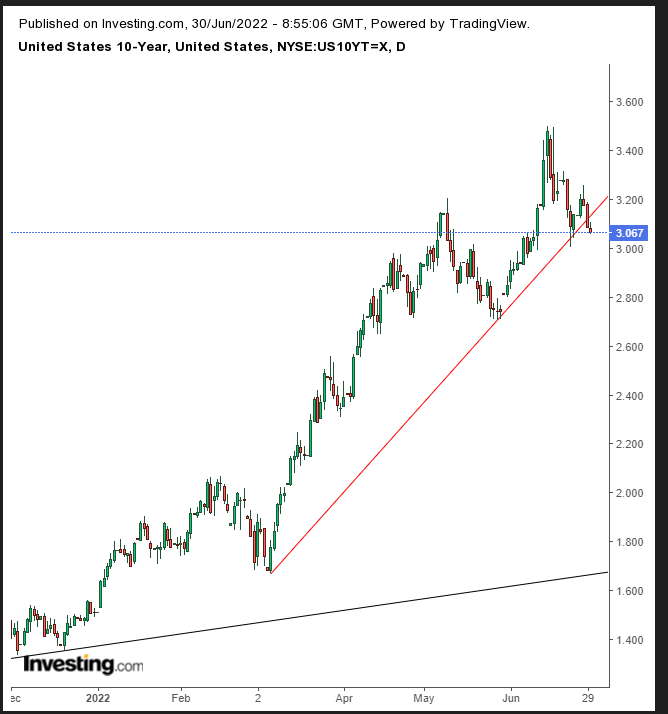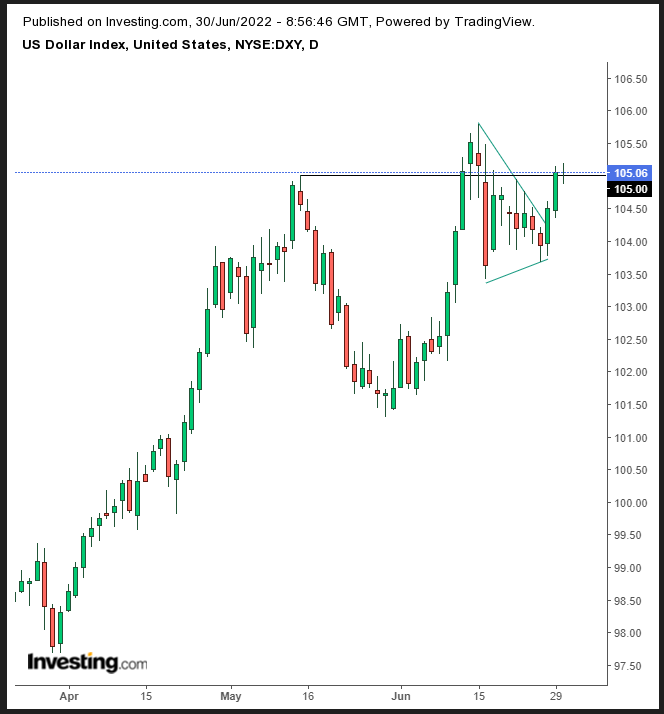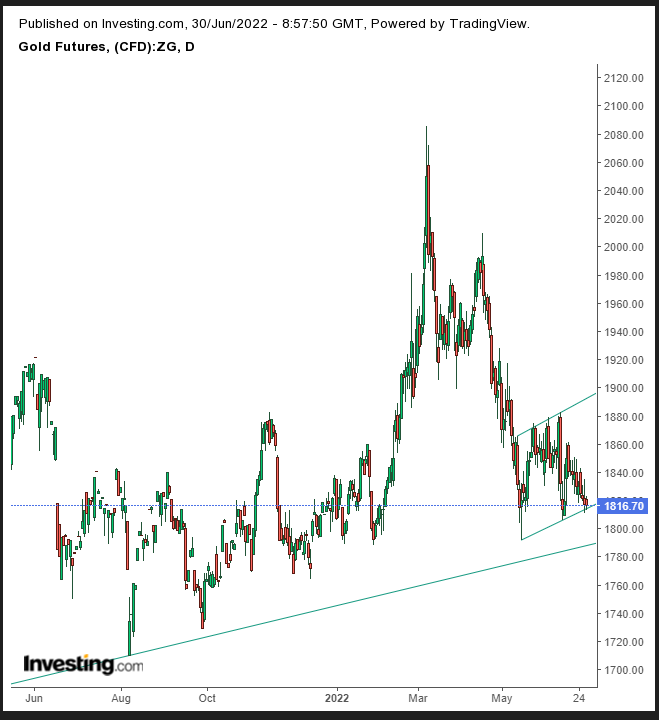- Central bank chiefs warn of prolonged inflation
- Treasury yields slide
- Bitcoin extends rout
Key Events
Escalating concerns that global central banks' efforts to tackle the highest inflation in decades by hiking rates will trigger a global recession sent futures on the Dow, S&P, NASDAQ, and Russell 2000 tumbling on Thursday. European markets also fell.
The US dollar advanced.
Global Financial Affairs
Yesterday, US Federal Reserve Chair Powell reiterated that the US is in "strong shape" and "well-positioned to withstand tighter monetary policy," but went on to say that the process will probably cause some "pain."
The STOXX 600 Index slumped, declining for the second day. The pan-European gauge is set to close the quarter with a 10.7% loss. Economically sensitive sectors like basic resources dropped 2.1%. Automobiles, which may also suffer from soaring gas prices, fell 2.1%, to the lowest since March and close to levels not seen since November 2020.
The German DAX gapped deeply, after falling yesterday.

The index fell to the lowest since November 2020 after completing a small double top, whose initial breakout confirmed its neckline's resistance.
Asian shares were mixed. China's Shanghai Composite's 1.1% jump was the only major regional index to close in the green after it reported manufacturing PMI for June was 50.2, slightly below 50.5 expectations, but still registering growth.
Australia's ASX 200 lost 1.97%, underperforming the region after global central banks repeated vows to tame inflation at whatever cost which wast too much for local traders after the Reserve Bank of Australia had already increased rates twice this year and has vowed to continue. June was the worst month for Australia's stock market since March 2020.
South Korea's KOSPI followed closely with a 1.91% selloff. It is on track for its worst quarter since the Q1 2020.
US stocks were mixed. The S&P 500 closed little changed and slightly above the Fibonacci 38.2% retracement level of about 3,815 that investors have been closely watching. Quarterly portfolio rebalancing contributed to index fluctuations.
Yields on the 10-year note slid for the third day as the equity selloff drove investors to preserve capital in bonds.

Yields extended the penetration of the uptrend line since the Mar. 7 low, which would leave it free to retest the May 26 low before continuing toward the long-term uptrend line since the oft-mentioned 2020 bottom.
The dollar retained gains after a two-day rally, but found resistance.

The greenback stopped an advance after completing a bullish pennant at the May 13 highs. This may send traders to retest the pennant before extending another leg up.
Gold was slightly lower, after four days of declines.

The price found support at the bottom of a short-term rising channel, above the long-term uptrend line.
Bitcoin extended a route, falling for the fifth straight day, after SEC rejected an application from Grayscale to list a spot Bitcoin ETF.
The cryptocurrency extended the downside breakout of a continuation pattern that implied a target of $5K.
Oil fluctuated between gains and losses but is set for its first monthly loss this year, ahead of the OPEC+ meeting.
Up Ahead
- German manufacturing PMI is published on Friday.
- Eurozone CPI is printed on Friday.
- On Friday, ISM Manufacturing PMI is released.
